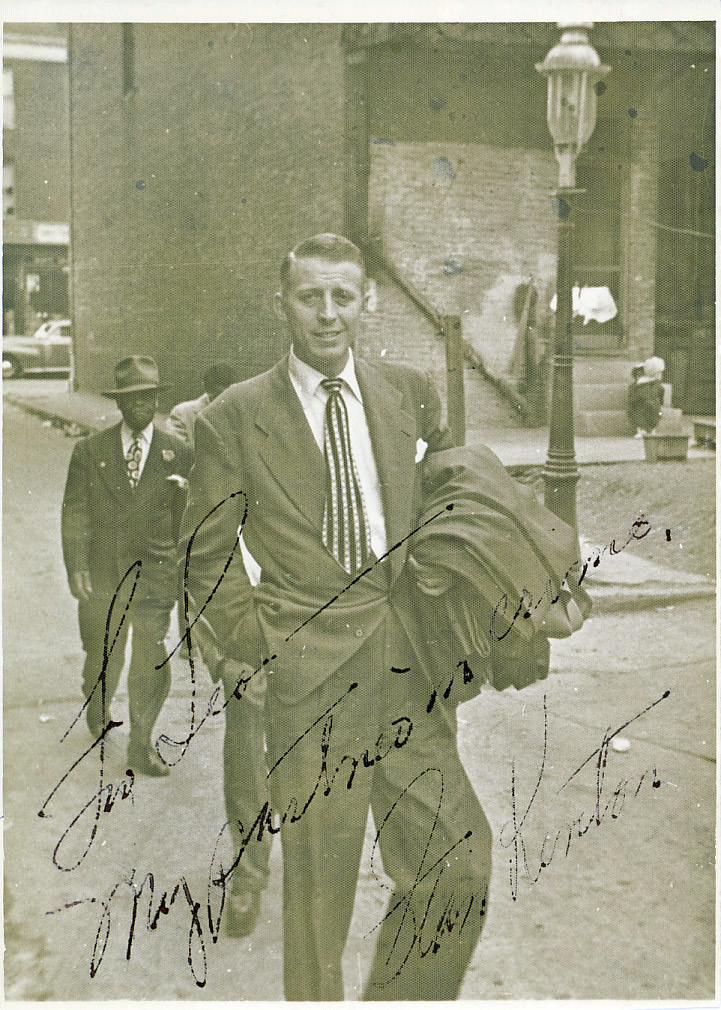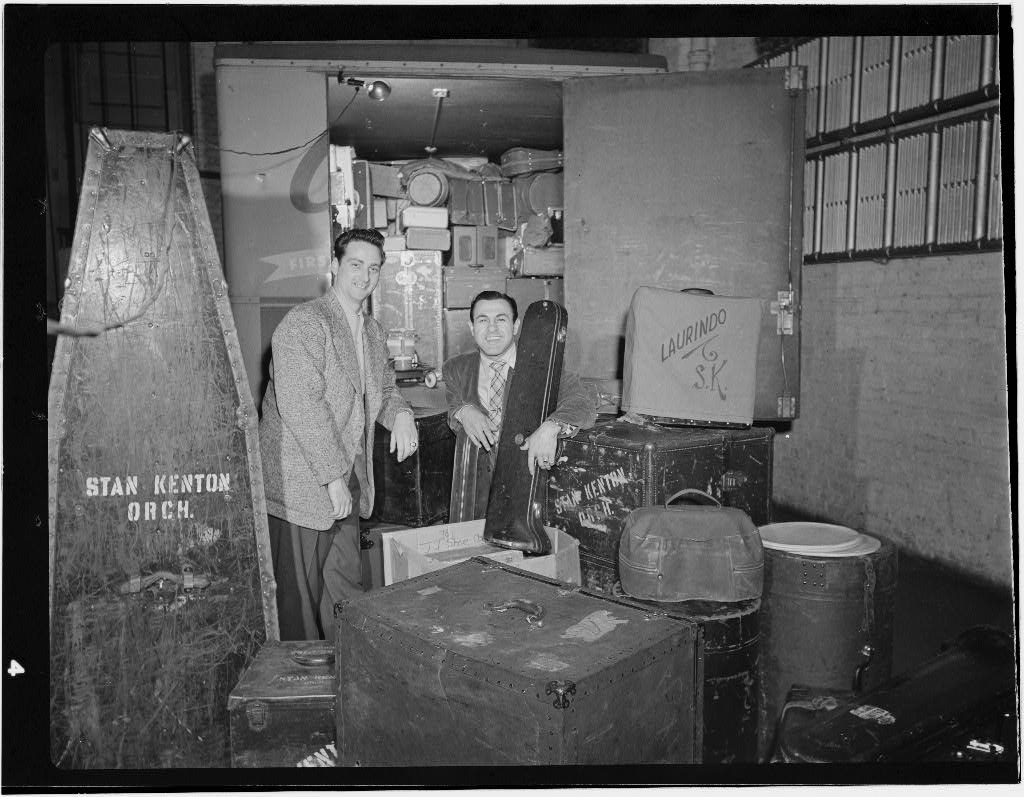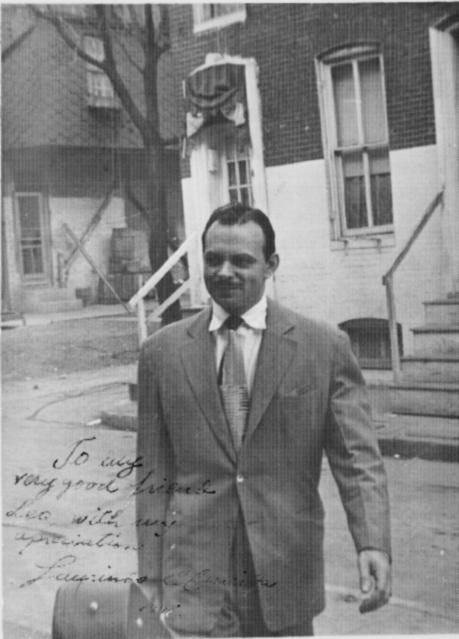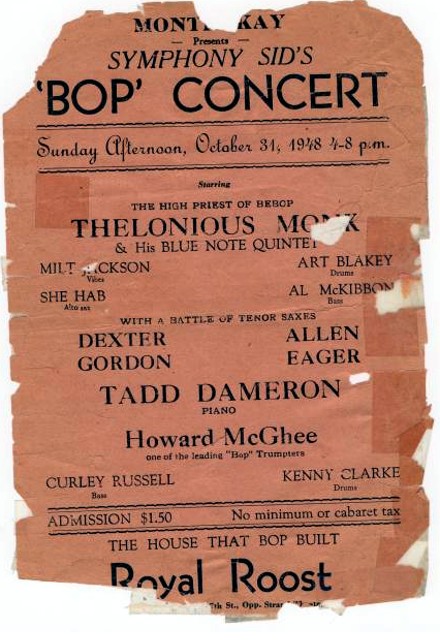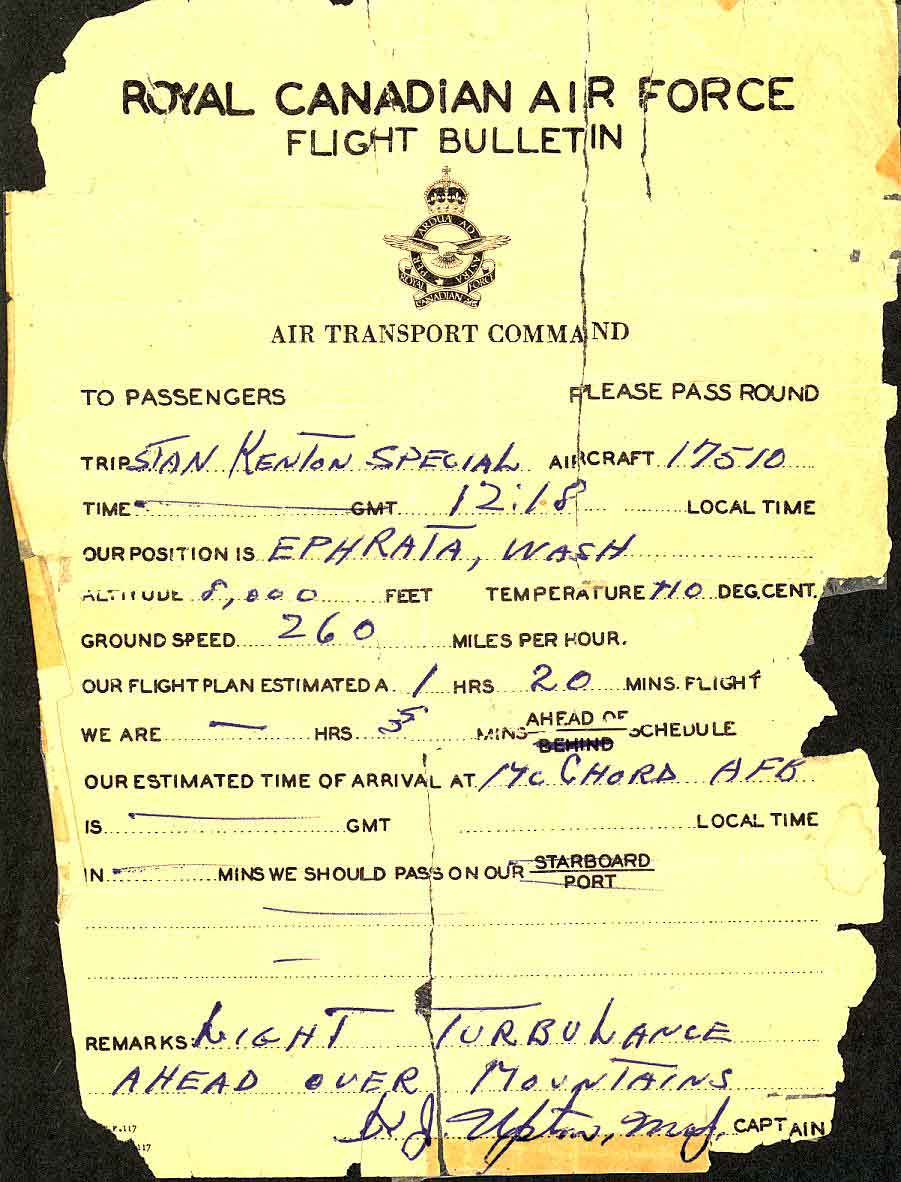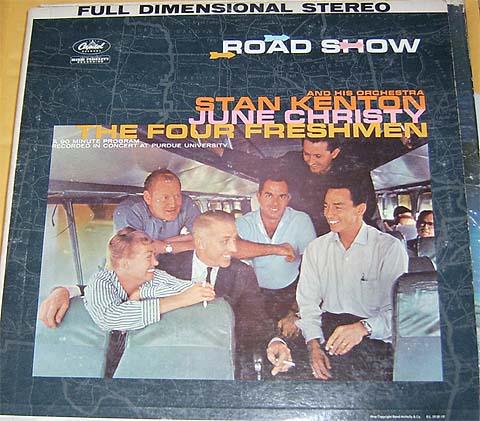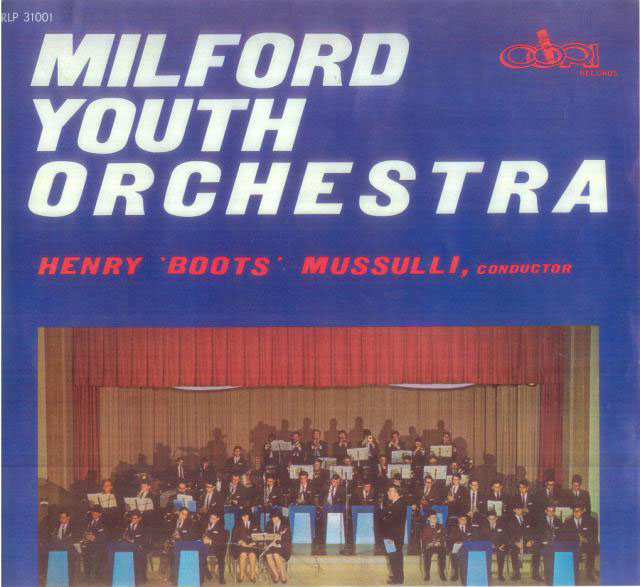Leo Curran, Kenton Road Warrior
Leo Curran, one of NEJA’s founders and a member of its board of directors, died in his hometown of Milford, MA on Sep. 23, 2008. Steve Cooper wrote this profile two years before Curran’s death.
-By Steve Cooper
Musical Roots
The son of John F. Curran and Mary (Ross) Curran, Leo was born on March 10, 1927 in Milford, MA. He has loved jazz since his youth and studied tenor saxophone and clarinet with the legendary Milford native “Boots” Mussulli. Eventually, Leo began playing local gigs. His major influences were tenor saxophonists Lester Young and Mussulli.
Leo entered the Navy in 1944 and served two years before returning to Milford. Although he did not continue playing professionally (his mother sold his horns when he was in the service!), he fed his passion for jazz, buying records and going to area clubs. His favorite players of this era were the legendary New England pianist Dave McKenna and Stan Getz, along with the pre-eminent beboppers Dizzy Gillespie and Charlie Parker.
Connecting With Kenton
The son of John F. Curran and Mary (Ross) Curran, Leo was born on March 10, 1927 in Milford, MA and passed away on September 23, 2008 at the age of 81. He has loved jazz since his youth and studied tenor saxophone and clarinet with the legendary Milford native “Boots” Mussulli. Eventually, Leo began playing local gigs. His major influences were tenor saxophonists Lester Young and Mussulli.
Leo entered the Navy in 1944 and served two years before returning to Milford. Although he did not continue playing professionally (his mother sold his horns when he was in the service!), he fed his passion for jazz, buying records and going to area clubs. His favorite players of this era were the legendary New England pianist Dave McKenna and Stan Getz, along with the pre-eminent beboppers Dizzy Gillespie and Charlie Parker.
The 1948 Kenton Band
Curran says his position with the Kenton orchestra amounted to being a “gopher” for band members, preparing all stage set-ups, positioning music stands, and assigning clean uniforms for each performance. What a line-up the Kenton band had in 1948-musicians such as Art Pepper, Shelly Manne, Eddie Safranski, Laurindo Almeida, and Milt Bernhardt, vocalist June Christy, and arrangers Pete Rugolo and Neil Hefti. And what fringe benefits! When the band was in New York, say at the Paramount Theater, Leo could 'bop' over to the Royal Roost with some of the band members and catch modern jazz stars such as alto saxophonist Charlie Parker, pianist Thelonious Monk, and New England tenor player Allen Eager. Other Roost fixtures at the time were Tadd Dameron, Miles Davis, and Dizzy Gillespie’s big band featuring Chano Pozo.
The tour ended three months later at the Adams Theater in New Jersey. Leo dropped in on Kenton to say his good-byes, and to his surprise Stan asked him to stay on for the next road tour, a tour in which Leo would take on new responsibilities. On paper, he still assisted George with transporting the band’s gear and setting up venues, but now he began doing other important tasks such as setting travel routes, arranging hotel accommodations, scheduling band personnel, and engineering lighting and sound for each venue. Given the band’s full and hectic schedule on tour in the late ’40s and early ’50s, Leo was a very busy guy and in many respects he became one of Kenton's closest advisers.
In December 1948, after a gig at the Paramount Theatre, Kenton disbanded the orchestra and gave everyone two weeks severance pay. Leo returned to Milford. In the spring of 1949, Leo got a call from Elliot Lawrence, leader of a Philadelphia-based band, and as a result Leo toured with the orchestra as band boy for a few months.
The Innovations Orchestra
Following the Eliot Lawrence gig, Kenton asked Leo’s assistance in preparing and organizing the next incarnation of the Kenton band-the Innovations Orchestra. This 40-piece orchestra incorporated strings, and the music featured third-stream elements and new writing by the likes of Bill Russo and Bob Graettinger. Leo traveled to Balboa where he and George Morte immersed themselves in the complexities of tour preparations. The sheer size of the orchestra and its equipment, and the stage requirements presented Leo and George Morte with new challenges. A “dry run” or dress rehearsal took place at Los Angeles Philharmonic Hall in January 1950, and the band hit the road in February for a five month tour. Upon receiving “orders” from Kenton in late summer 1951, Leo “reported” and was an instrumental part of the second Innovations Orchestra tour.
The 1952-53 Concerts in Miniature Series
In 1952, NBC radio began airing a weekly series of Tuesday evening radio remotes which became known as Concerts in Miniature. These hook-ups were involved (see format) requiring close coordination among the band, the venues, and the networks, and the clearing of all the tunes through ASCAP. Each radio appearance had its own broadcasting requirements. Leo was a can-do guy and Stan assigned him responsibility for producing these programs as well as all other radio and TV appearances. And of course, he and George had to keep up with all the other myriad road activities as well.
Leo remembers the time in 1952 in Detroit when, at Kenton’s request, he went to a nearby town to check out a drummer with Tex Beneke’s band. His name was Mel Lewis. Leo was floored by Lewis’s talent and consequently asked him to come over to Detroit and discuss an opening for a drummer in Kenton’s band. Lewis talked to Stan, but for logistical reasons didn’t end up joining the band until 1954.
Returning to Milford
Curran remained George’s assistant with the Stan Kenton Orchestra until 1955 when Morte retired. Rather than remain with the band on the road, Leo returned to Milford where he hoped to increase his family’s financial stability. Reunited with his good friend Boots Mussulli once again, the pair began producing gigs at the Crystal Room in Milford. These events continued until 1965. Leo continued to support the Kenton organization sporadically in other capacities. At Stan’s request, Leo went back out on the road with the Kenton band in 1959, this time with the Road Show presentation featuring June Christy and the Four Freshmen. Also, Leo sometimes set up radio promotional interviews when the Kenton band traveled to the East Coast.
Organizing the Milford Youth Orchestra
Leo and Mussulli worked towards giving a boost to the next generation of young jazz players. In 1965, they formed the Milford Youth Orchestra (see article) under the musical direction of Mussulli and Leo’s organizational direction. Their selfless commitment to this group infused each student with a sense of responsibility towards the orchestra. Many of today’s professional jazz musicians in New England, such as Tony Lada, Bobby Tamagni, and Gary Valente, credit their experience in the Milford Youth Orchestra with giving them the discipline for achieving their musical goals and instilling in them a life-long love of jazz.
The Globe Jazz Festival invited the Milford Youth Orchestra to perform as the opening act at the 1966 festival. Father Norman O'Connor, the “Jazz Priest,” emceed. The young musicians played outstanding jazz, so good that George Wein, founder of the Newport Jazz Festival, went up on stage and publicly invited the band to perform at the 1967 Newport festival. The orchestra’s excellence and musicality astounded audiences and professional players alike. The Milford Youth Orchestra also recorded an LP for the Cori label. Read the liner notes.
Leo Today
Curran has continued his involvement in the jazz scene. In the past few years he has maintained close ties with ex-Kenton musicians such as Don Bagley, Lennie Niehaus, Charlie Mariano, Eddie Bert, Pete Candoli, and Herb Pomeroy. Leo regularly attends Kenton alumni reunion activities. Among the most notable are:
- In 1991, “Back to Balboa,” 50th anniversary of the Kenton Rendezvous Band
- In 1997, “Kenton Era” in Redondo Beach, CA
- In 2000, “Rendezvous in Britain” in England
- In 2003, “Balboa Rendezvous” in Newport Beach, CA
Leo continues to be a strong supporter of youth jazz. He, along with legendary musicians such as Clark Terry and Snooky Young, served on the advisory board of the non-profit organization San Diego Horns, Inc. In 2001, at the request of Dan Terry, the veteran West Coast musician composer who serves as President and CEO of San Diego Horns, Leo went to Berklee School of Music and rounded up arrangements by the likes of Gene Roland, Marty Paich, and Al Cohn. These arrangements were brought to life by the San Diego Youth Swing Band, a group organized and developed by San Diego Horns, Inc.
Leo serves as a board member of the New England Jazz Alliance. He has donated from his personal library many significant photos and recordings that document New England jazz history. His continuing contact with many jazz musicians worldwide reflects his dedication to preserving the personal side of jazz history, and the musicians’ unique contributions to the world of music.


